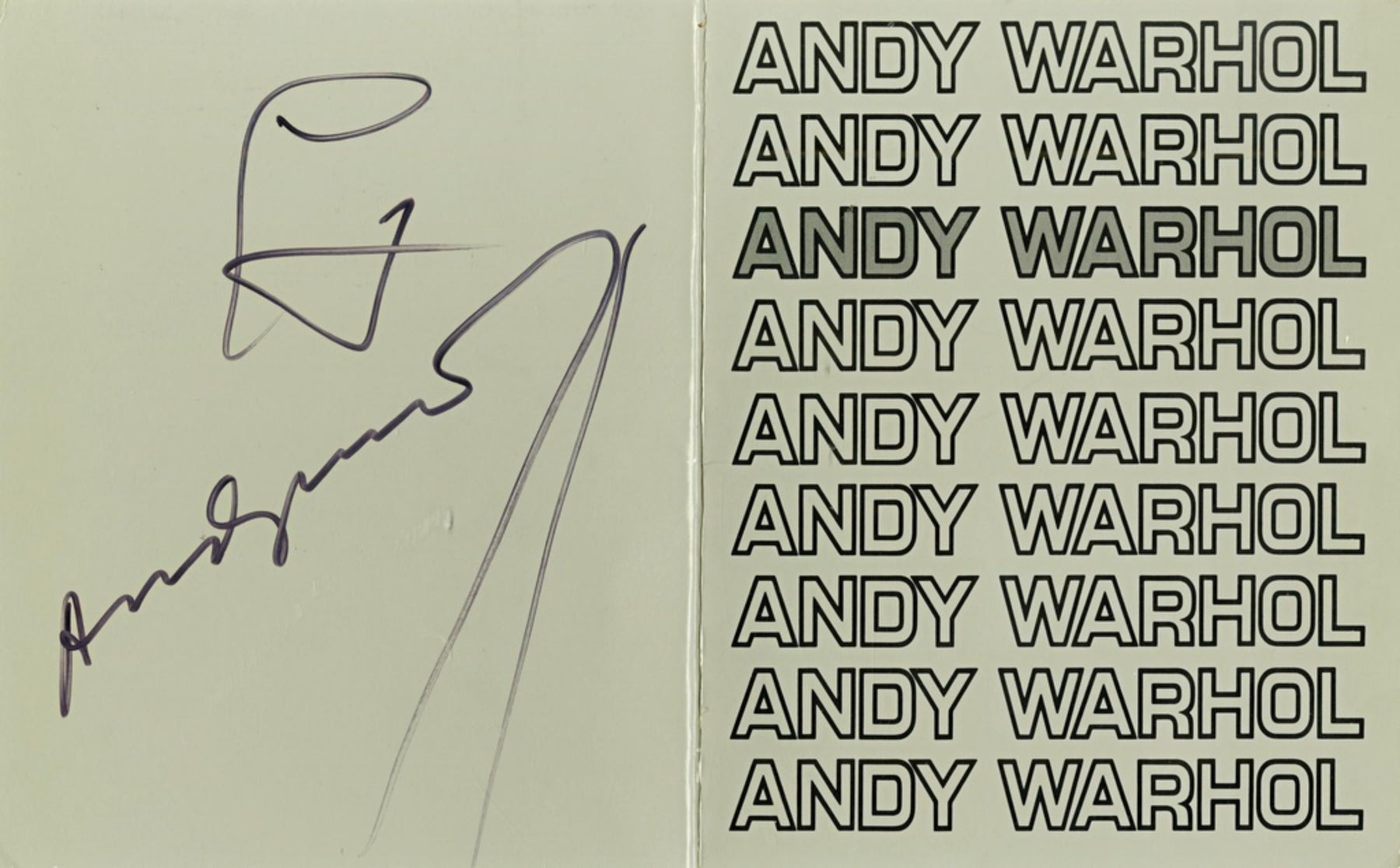
Andy Warhol's Signatures
-
Introduction
- Brief overview of Andy Warhol and his impact on art
- Introduction to the significance of Andy Warhol's signature
-
The Signature as Artistic Identity
- The role of an artist's signature in establishing identity
- How Warhol's signature became synonymous with his work
-
Signature Evolution
- Evolution of Warhol's signature over the years
- Influence of different artistic phases on his signature style
-
Warhol's Signature Techniques
- Explanation of Warhol's signature techniques
- Role of color, style, and placement in his signatures
-
The Collectibility of Signature
- How Warhol's signature adds value to his artwork
- Rarity and authenticity as factors in collectibility
-
Controversies and Forgeries
- Discussion on controversies surrounding Warhol's signatures
- Challenges of identifying genuine Warhol signatures
-
Andy Warhol's Personal Connection
- Insights into Warhol's perspective on signing his works
- Anecdotes or quotes about his relationship with his own signature
-
Legacy and Influence
- How Warhol's signature has outlived him
- Influence on contemporary artists and their signatures
-
The Cultural Phenomenon of a Signature
- Examination of the broader cultural significance of signatures
- Link between signatures, celebrity culture, and fandom
-
Conclusion
Andy Warhol Signature: The Mark of Artistic Identity

In the world of art, certain names stand as icons, their work transcending time to become ingrained in the fabric of culture. Andy Warhol, a revolutionary figure in contemporary art, is one such name. His artistic impact is profound, but what about the smaller yet equally powerful element that accompanies his work—his signature? In this article, we delve into the world of the Andy Warhol signature, exploring how a seemingly simple mark became an integral part of his artistic identity.
The Signature as Artistic Identity
An artist's signature is more than just a name; it's a mark of authenticity and identity. Just as a fingerprint is unique to an individual, an artist's signature is a representation of their creative self. In Warhol's case, his signature is a testament to his distinctive approach to art and his ability to blur the lines between high culture and popular culture.

Signature Evolution
Much like his art, Andy Warhol's signature underwent a fascinating evolution. From his early days as a commercial artist to his later exploration of pop art, his signature adapted to reflect the essence of his work. It became a canvas in itself, embodying his playful spirit and ever-changing artistic persona.
Warhol's Signature Techniques
Warhol's signature, like his art, is characterized by its boldness and simplicity. He often used vibrant colors and unique placements to infuse his signature with a sense of artistry. The way he signed his works became an extension of his artistic vision, an intentional addition to the overall composition.
The Collectibility of Signature
The presence of an authentic Andy Warhol signature significantly impacts the collectibility and value of his artworks. Each signature carries the weight of history, representing not only Warhol's connection to the piece but also the era in which it was created. The rarity of his genuine signature adds an element of exclusivity, making his works even more sought after by collectors.
Controversies and Forgeries
While Warhol's signature enhances the value of his art, it has also been the subject of controversies. The allure of his name has led to attempts at forgery, raising questions about authenticity. Distinguishing genuine Warhol signatures from forgeries requires expertise and careful examination, highlighting the challenges in preserving an artist's legacy.
Andy Warhol's Personal Connection
Warhol's signature was more than just a formality to him; it held personal significance. He saw it as a way to connect with his audience and leave a lasting impression. His relationship with his own signature was as complex and enigmatic as his art, often leaving us to ponder his intentions.

Legacy and Influence
Even decades after his passing, Andy Warhol's signature remains a potent symbol of his influence. His unique blend of art and celebrity culture, represented by his signature, has inspired countless artists to experiment with their own identities and signatures. In a way, his signature lives on as a testament to his lasting impact on the art world.
The Cultural Phenomenon of a Signature
Beyond the art world, signatures have a cultural significance that goes beyond a mere identifier. They represent ownership, authority, and even fandom. Warhol's signature transcends traditional boundaries, intertwining his personal identity with the broader cultural phenomenon of celebrity signatures.
Conclusion
The Andy Warhol signature is more than just a name—it's a portal into a world of innovation, creativity, and cultural evolution. Like his art, Warhol's signature continues to challenge norms, provoke thought, and inspire generations of artists to leave their own mark on the canvas of history.
Frequently Asked Questions
-
Why is Andy Warhol's signature significant? Andy Warhol's signature is significant because it embodies his artistic identity and adds authenticity and value to his artworks.
-
How did Warhol's signature evolve over time? Warhol's signature evolved to reflect his changing artistic phases, incorporating colors and placements that aligned with his creative vision.
-
How does Warhol's signature impact the value of his artworks? The presence of an authentic Warhol signature enhances the collectibility and value of his artworks, making them more sought after by collectors.
-
What challenges are associated with identifying genuine Warhol signatures? The allure of Warhol's signature has led to attempts at forgery, posing challenges in distinguishing genuine signatures from forgeries.
-
What is the broader cultural significance of signatures? Signatures represent ownership, authority, and fandom, intertwining personal identity with larger cultural phenomena. Warhol's signature is an example of this phenomenon.
